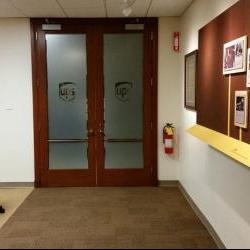- About Archives
- About SAA
- Careers
- Education
- Publications
- Advocacy
- Membership
The UPS Archives – From Messengers to a Global Logistics Network
by Jill Swiecichowski, Archivist/Historian, UPS
The collection of the UPS Archives documents a service-driven logistics and transportation company that has evolved to meet the needs of its customers across the global marketplace. UPS was founded in 1907 as a telephone messenger service originally named American Messenger Company. The early deliveries were made – mostly on foot or by streetcar and, occasionally delivered via bicycle on the hilly streets of Seattle.
By 1913 the company’s business focus shifted to delivering purchases made at retail stores. The stores knew that people would buy more if they didn’t have to carry their purchase home themselves. In 1919 the company expanded to Oakland, CA, and changed the name to United Parcel Service. UPS continued to deliver retail packages as its primary business until the early 1950s, when the business focus shifted to delivering common carrier and wholesale packages – in other words business to business, business to consumer, or personal shipments.
For the company’s 50th anniversary, work began on a book about the history of the company. Though that book was never published, these documents and interviews compiled about the founding of the company and its leadership formed the beginnings of the UPS Archives. These materials were housed in various offices and departments until 1987, when the items were organized into a single company archives location. When UPS moved into the current corporate office in Atlanta, GA in 1994, the Archives finally gained a dedicated, environmentally controlled, and most importantly, secure physical space.

The UPS Archives holds approximately 5,000 cubic feet of materials. The vast majority of the collection is paper items – mostly training materials, employee publications, customer publications, annual reports, letters to the shareholders, and incorporation documents. The collection also contains a vast number of photographic materials covering all areas of UPS operations and employee life dating back to 1910. The archives also houses a number of physical items that include uniforms, badges, models of ground delivery vehicles and airplanes, commemorative lapel pins, and various models of DIAD boards (which are the proprietary hand-held devices drivers use to obtain a customer’s signature for a delivery).
The UPS archival collection is used in many ways. It is a source of research material and content assets for speeches, presentations, and internal and external communications. Use of these materials help preserve the company’s legacy and culture and help tell UPS’s story to new generations.
 The UPS Archives also houses the UPS History Exhibit. The exhibit gives a visual representation of UPS history and culture. The exhibit contains a brief timeline and individual exhibit areas that cover the topics of technology, company founders and leaders, community service, environmental efforts, vehicles (both ground and air), driver experience, employee culture, and sponsorships. New UPS employees, interns, newly transferred employees, media, student groups, and customers are the typical visitors to the exhibit. By using the archival collection and visiting the exhibit, UPS employees continue to learn about the company’s history and culture and how they can take the company further.
The UPS Archives also houses the UPS History Exhibit. The exhibit gives a visual representation of UPS history and culture. The exhibit contains a brief timeline and individual exhibit areas that cover the topics of technology, company founders and leaders, community service, environmental efforts, vehicles (both ground and air), driver experience, employee culture, and sponsorships. New UPS employees, interns, newly transferred employees, media, student groups, and customers are the typical visitors to the exhibit. By using the archival collection and visiting the exhibit, UPS employees continue to learn about the company’s history and culture and how they can take the company further.
Note: Repository Profilies are provided by the organization. The Business Archives Section will update as notified by the organization. Accordingly, information may not be accurate. Individuals should contact the organization before using or citing information.